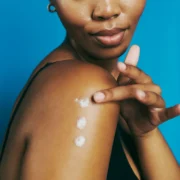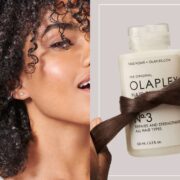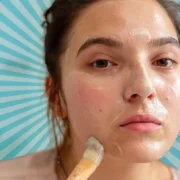Cheek fillers have become increasingly popular in the world of cosmetic enhancements, offering individuals the opportunity to enhance their facial features and achieve a more youthful appearance. This article will delve into the concept of cheek fillers and provide insights into the before and after aspects of the procedure.
To begin with, cheek fillers, also known as dermal fillers, are injectable substances that are used to add volume and contour to the cheeks. They typically consist of hyaluronic acid, a naturally occurring substance in the body that provides moisture and elasticity to the skin.
The process of how cheek fillers work involves the injection of the filler substance into targeted areas of the cheeks. This helps to lift and plump the cheeks, providing a more defined and youthful contour to the face. The results are often immediate and can last for several months to a year, depending on the type of filler used.
Before getting cheek fillers, it is important to have a consultation with a qualified provider. During this process, expectations and desired outcomes can be discussed, and the provider can assess whether you are an appropriate candidate for the procedure. Different types of cheek fillers are available, each with their own unique characteristics and benefits. It is essential to understand the different options and choose the one that best suits your needs.
Common concerns and considerations before getting cheek fillers include potential discomfort during the procedure, the possibility of bruising or swelling afterward, and the importance of choosing a qualified and experienced provider. It is crucial to thoroughly research and select a professional who has a proven track record in performing cheek filler procedures.
After getting cheek fillers, there are certain things to expect. Swelling and bruising are common in the immediate aftermath of the procedure, but these effects typically subside within a few days. The results of cheek fillers are noticeable immediately, and patients can enjoy a more contoured and youthful appearance. The duration of the results varies depending on the type of filler used but can last from several months to a year or longer.
While cheek fillers are generally safe, there are potential side effects and risks associated with the procedure. These can include temporary discomfort, redness, or lumps at the injection site. In rare cases, there is a risk of infection or allergic reactions. It is essential to discuss these potential risks with your provider before undergoing the procedure.
Choosing a qualified provider for cheek fillers is of utmost importance to ensure safe and satisfactory results. Look for a provider who is experienced, licensed, and has a good reputation in the field. They should have a keen understanding of facial aesthetics and be able to tailor the treatment to your specific needs and desired outcome.
Lastly, it is worth considering the alternatives to cheek fillers. These can include other cosmetic procedures such as facelifts or fat transfers, as well as non-surgical options like facial exercises or contouring makeup techniques. Exploring the different options and consulting with a professional will help you make an informed decision about what is best for you.
What are Cheek Fillers?
Cheek fillers, also known as dermal fillers, are a popular cosmetic treatment used to add volume and enhance facial features, such as the cheeks. This procedure involves injecting substances like hyaluronic acid into the cheeks, which can help reduce the appearance of wrinkles and restore youthful fullness. Cheek fillers are especially effective for reducing hollow or sunken cheeks, providing a more defined and youthful look to the face. Unlike surgical options, cheek fillers are a non-invasive alternative for individuals who want to improve their facial appearance without undergoing extensive procedures. However, it is crucial to consult with a qualified professional to fully understand the process, potential risks, and expected results before considering cheek fillers.
How do Cheek Fillers Work?
Cheek fillers are a cosmetic treatment used to enhance volume and contour in the cheeks. They work by attracting and retaining moisture, plumping up the skin and reducing the appearance of wrinkles and sagging. The procedure involves injecting a gel-like substance, typically hyaluronic acid, into the cheeks to add fullness and restore a youthful appearance. Moreover, cheek fillers stimulate collagen production, further improving the skin’s elasticity and firmness. So, how do cheek fillers work? They work by attracting and retaining moisture, plumping up the skin and reducing wrinkles and sagging. They also stimulate collagen production for improved elasticity and firmness. Although cheek fillers are temporary and eventually metabolized by the body, results can last anywhere from six months to two years. It is advisable to consult with a qualified professional to determine if cheek fillers are right for you.
Before and After Cheek Fillers
Before and after cheek fillers, it’s important to consider the desired outcome, the expertise of the provider, and the potential side effects. When considering before and after cheek fillers, it’s essential to evaluate the desired outcome, ensuring it aligns with your expectations and facial structure. Take a moment to browse through before and after photos of previous patients to assess the effectiveness of the procedure. It’s crucial to select a provider who possesses extensive experience in conducting cheek filler injections. Additionally, it’s vital to be aware of potential side effects such as bruising, swelling, and asymmetry. To ensure a successful outcome, it’s imperative to consult with a qualified professional.
What to Expect Before Getting Cheek Fillers?
What to Expect Before Getting Cheek Fillers?
Before deciding to get cheek fillers, it is crucial to have a clear understanding of the process and know what to anticipate. There are several key factors that you should take into consideration:
- – Consultation: It is advisable to schedule a consultation with a qualified provider who will evaluate your objectives and expectations.
- – Medical history: Bear in mind that fillers may not be suitable for everyone, so it is essential to disclose any medical conditions, allergies, or medications that you may be currently taking.
- – Pre-treatment recommendations: Your provider may advise you to abstain from blood-thinning medications, alcohol, and specific supplements before the procedure.
- – Temporary side effects: It is common to experience some immediate swelling, bruising, and redness following the treatment. However, these side effects should diminish within a few days.
- – Results: Keep in mind that it may take a few weeks for the final results to become fully apparent as the fillers settle in. For optimal outcomes, diligently adhere to your provider’s aftercare instructions.
What are the Different Types of Cheek Fillers?
The different types of cheek fillers, including Hyaluronic Acid (HA) Fillers, Calcium Hydroxylapatite Fillers, Poly-L-Lactic Acid (PLLA) Fillers, and Autologous Fat Injections, vary in composition, duration, and desired results. Here are some common options to consider when choosing a cheek filler:
| Types of Cheek Fillers | Key Information |
|---|---|
| Hyaluronic Acid (HA) Fillers | These fillers, such as Restylane and Juvederm, are made from a naturally-occurring substance in the body. They provide volume and hydration and typically last 6-18 months. |
| Calcium Hydroxylapatite Fillers | Examples include Radiesse. These fillers stimulate collagen production and may last up to 2 years. |
| Poly-L-Lactic Acid (PLLA) Fillers | Fillers like Sculptra stimulate collagen production gradually, providing long-lasting results of up to 2 years. |
| Autologous Fat Injections | This involves using your own fat taken from another part of the body and injecting it into the cheeks for long-lasting results. |
Historically, cheek augmentation dates back to ancient civilizations where various techniques were used to enhance facial contours. In modern times, advancements in technology and medical aesthetics have allowed for a wide range of cheek filler options to provide natural-looking and long-lasting results.
Common Concerns and Considerations Before Getting Cheek Fillers
Before getting cheek fillers, it is important to consider some common concerns and considerations to ensure a safe and satisfactory experience.
- Research and choose a qualified and experienced provider who specializes in dermal fillers.
- Discuss your desired results and expectations with your provider to ensure they align with what can realistically be achieved.
- Consider the potential side effects and risks associated with cheek fillers, such as swelling, bruising, infection, or allergic reactions.
- Inform your provider about any medical conditions or medications you are taking to determine if cheek fillers are suitable for you.
- Ask about the type of filler being used, its composition, and how long the results are expected to last.
- Discuss the cost of the procedure, including any additional touch-up treatments that may be required.
- Ensure that you have a clear understanding of the aftercare instructions and follow them diligently to optimize your results and minimize complications.
What to Expect After Getting Cheek Fillers?
What to Expect After Getting Cheek Fillers?
After getting cheek fillers, it’s important to know what to expect for proper aftercare. It’s natural to experience immediate results, such as fuller cheeks and a more youthful appearance. However, it’s also important to be aware of temporary side effects, including swelling, bruising, and redness at the injection site.
To ensure proper healing, it’s crucial to follow the post-procedure instructions given by your healthcare provider. These instructions may include avoiding strenuous activities and applying ice packs to reduce swelling. Remember that individual experiences may vary, but typically, the results of cheek fillers last for several months.
During your recovery, it’s essential to consult with your provider if you have any concerns or questions. They will provide personalized guidance to address your needs and ensure a smooth healing process.
Typical Results and Duration of Cheek Fillers
The typical results and duration of cheek fillers can vary depending on factors such as the type of filler used and individual metabolism. Here are some key points to consider:
- Results: Cheek fillers can enhance facial contours and add volume to the cheeks, providing a more youthful appearance. The results are usually immediate and can last several months.
- Duration: The longevity of cheek fillers typically ranges from 6 to 18 months. This can vary based on the specific filler used and how the individual’s body metabolizes the product.
- Maintenance: To maintain desired results, touch-up treatments may be required. Regular consultations with a qualified provider can help determine the typical results and duration for additional treatments.
- Individual experience: Individual experiences with cheek fillers can vary. Factors such as age, skin health, and lifestyle choices can impact the typical results and duration of the treatment.
It is important to consult with a qualified provider to understand the specific results and duration that can be expected with cheek fillers.
Possible Side Effects and Risks of Cheek Fillers
When considering cheek fillers, it is important to be aware of the possible side effects and risks involved. Here are some key points to consider:
- Possible Side Effects and Risks of Cheek Fillers – Infection: There is a small risk of infection at the injection site. It is crucial to choose a qualified provider with proper sterilization techniques.
- Possible Side Effects and Risks of Cheek Fillers – Allergic reactions: Some individuals may experience allergic reactions to the filler material. It is essential to disclose any allergies to your provider before the procedure.
- Possible Side Effects and Risks of Cheek Fillers – Swelling and bruising: It is common to experience swelling and bruising after the procedure, which usually resolves within a few days. Applying ice packs can help reduce these effects.
- Possible Side Effects and Risks of Cheek Fillers – Asymmetry or lumps: In rare cases, cheek fillers may lead to asymmetry or the formation of small lumps. This can typically be corrected by your provider.
- Possible Side Effects and Risks of Cheek Fillers – Migration of fillers: There is a very slight possibility of fillers shifting from the injection site. This can be minimized by choosing a skilled and experienced provider.
By being aware of these potential side effects and risks, you can make an informed decision and take necessary precautions when considering cheek fillers.
Choosing a Qualified Provider for Cheek Fillers
When choosing a qualified provider for cheek fillers, it is crucial to ensure safe and satisfactory results. Consider the following factors:
- Experience: Look for a provider with extensive experience in performing cheek filler injections.
- Credentials: Verify that the provider is properly licensed and certified in cosmetic treatments.
- Client testimonials: Read reviews and testimonials from previous clients to gauge the provider’s reputation.
- Techniques used: Inquire about the techniques the provider uses and their knowledge of the latest advancements in cheek filler procedures.
It is a fact that the number of cosmetic filler injections performed by board-certified dermatologists has increased by 40% over the past decade, according to the American Society for Dermatologic Surgery.
Alternatives to Cheek Fillers
If you’re considering alternatives to cheek fillers, there are a few options worth exploring:
- Facial exercises: Engaging in facial exercises can help tone and lift the muscles in your cheeks naturally over time.
- Microdermabrasion: This non-invasive procedure exfoliates the skin and promotes collagen production, resulting in a fresher and more youthful appearance.
- Radiofrequency treatments: These alternatives to cheek fillers use radiofrequency energy to stimulate collagen production and tighten the skin, helping to lift and contour the cheeks.
- Thread lifts: These are minimally invasive alternatives to cheek fillers that involve inserting dissolvable threads into the cheeks to lift and tighten sagging skin.
Frequently Asked Questions
What are cheek fillers and how do they work?
Cheek fillers are FDA-approved injectables that soften fine lines and wrinkles, improve symmetry, and create volume or dimension in the cheek area. They are used to restore lost volume in the cheeks, enhance facial contours, and achieve a more youthful appearance. Cheek fillers work by injecting a gel-like substance, such as hyaluronic acid or poly-L-lactic acid, into the cheeks to add volume and stimulate collagen production.
Who is a suitable candidate for cheek fillers?
The right candidates for cheek fillers are those who have lost volume in their cheeks, have pronounced nasolabial folds, or want cosmetic enhancement of their facial contours. It is important to consult with a board-certified doctor to determine if you are a suitable candidate for cheek fillers.
What are the common types of cheek fillers used?
There are various types of cheek fillers available, but hyaluronic acid fillers like Restylane Lyft and Juvederm Voluma are commonly used options. These fillers provide immediate results and can be reversed if necessary. Another option is Sculptra, which is made of poly-L-lactic acid and gradually adds volume over a period of 6 months.
What can I expect during the cheek filler procedure?
The cheek filler procedure is quick, usually taking 20-30 minutes. Before the procedure, a consultation will be conducted to discuss your goals and determine the amount of filler needed. The doctor will then carefully inject the filler into the desired areas of your cheeks. The recovery time is minimal, and you can resume your normal activities shortly after the procedure.
How long do the results of cheek fillers last?
The duration of cheek filler results varies depending on the type of fillers used. Hyaluronic acid fillers typically last 6-18 months, whereas Sculptra can provide results for up to 2 years. It is important to note that individual results may vary, and a follow-up appointment with your doctor may be required to maintain the desired results.
How can I find a qualified and experienced injector for cheek fillers?
To ensure safe and satisfactory results, it is crucial to thoroughly research and choose a qualified injector. Look for board-certified doctors who specialize in facial aesthetics and have extensive experience in administering cheek fillers. Reading reviews, seeking recommendations, and scheduling consultations can help you find a trustworthy doctor who understands facial anatomy and aesthetics.






